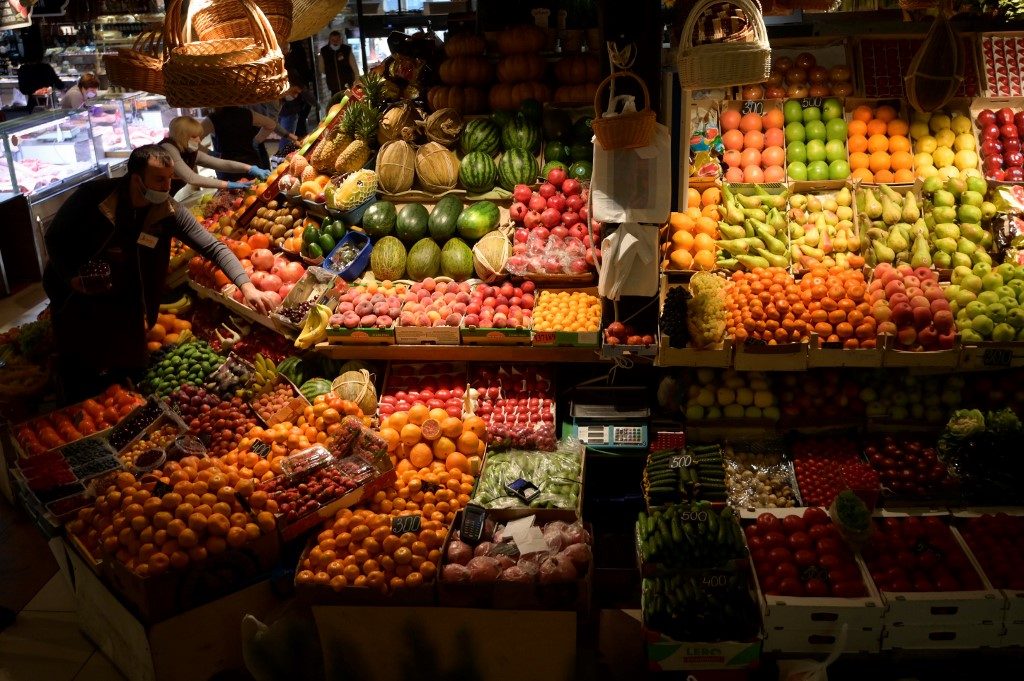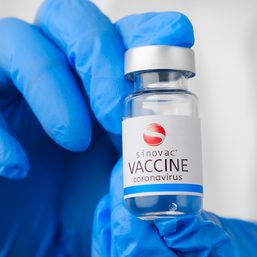SUMMARY
This is AI generated summarization, which may have errors. For context, always refer to the full article.

As the second wave of the coronavirus pandemic pummeled Russia over recent months, the Kremlin stopped short of bringing back a nationwide lockdown in an effort to save the economy.
Authorities in Moscow may have expected a rising virus toll as a result, but the move has not saved it from facing down an economic crisis it tried to avoid.
“These aren’t jokes. Unemployment is rising, wages are falling, basic goods are becoming more expensive by magnitudes,” President Vladimir Putin said during a Cabinet meeting last week.
The magnitudes he was referring to are stark.
Between January and November, the price of sugar jumped by 70%. The cost of sunflower oil rose by 24% and pasta by 10%.
After months of rising inflation – the effects of which have been compounded by the pandemic – Putin instructed ministers to introduce emergency measures to cap prices.
“It’s unacceptable,” he told them during the meeting.
With economic and social discontent a growing weak point for Putin after two decades in power, analysts said the move may be a cost-effective way to placate the public ahead of the holidays.
Political ‘theater’
“Money is becoming scare. Life is getting more difficult,” said Igor Nikolayev, director of the FBK Grant Thornton Institute of Strategic Analysis, who described Putin’s price control as a “political” move.
He explained that staple foods are at record high prices globally, making the problem not just a Russian one.
Putin’s Cabinet meeting was a piece of “theater,” said Andrei Movchan, a nonresident scholar in the Economic Policy Program at the Carnegie Moscow Center.
He explained that prices had fallen in previous years and were now stabilizing to their “normal inflation curve.”
But that may not matter to a Russian president who has to defend a mixed record on the economy and health at his annual marathon press conference on Thursday, December 17.
On top of rising prices, unemployment has jumped from 4.7% in March – just before a strict stay-at-home regime was introduced – to 6.3% in October.
While Russians increasingly found themselves out of work, their real disposable incomes fell by 4.3% between January and September – when the second wave surged.
In the 2nd quarter of the year, the number of Russians living below the poverty line increased by 1.3 million compared to the 1st quarter, according to federal statistics agency Rosstat.
By October, nearly 20 million people were living in poverty, Labor and Social Protection Minister Andrei Kotyakov has said.
‘Increase in mortality’
Putin had hoped 2020 would present an opportunity to revive a stagnating economy that for years has been battered by Western sanctions.
Now the government predicts the economy will shrink by 3.9% this year, while the Central Bank expects an even deeper decline.
Although that figure is better than in most European countries – where lockdowns have been instituted during the second wave – the ruble has also given up a third of its value since January.
Rather than shutter the economy with another quarantine, the Kremlin has banked on large hospitals in Moscow – the country’s most populated city and the epicenter of its outbreak – to help get Russia through the pandemic.
Authorities point to Russia’s total fatalities, which at 47,968 is much lower compared to other badly hit countries, as vindication for their decision.
But critics say that officials have downplayed the extent of the country’s outbreak.
Data published by Rosstat last week indicated excess deaths of nearly 165,000 year-on-year between March and October, suggesting virus deaths could be much higher.
Authorities themselves admit the figures are only going to get worse as Russia’s mass vaccination program has only just gotten underway.
“We expect an increase in mortality in November and December,” Deputy Prime Minister Tatiana Golikova said recently. – Rappler.com
Add a comment
How does this make you feel?

![[Rappler’s Best] US does propaganda? Of course.](https://www.rappler.com/tachyon/2024/06/US-does-propaganda-Of-course-june-17-2024.jpg?resize=257%2C257&crop=236px%2C0px%2C720px%2C720px)








There are no comments yet. Add your comment to start the conversation.